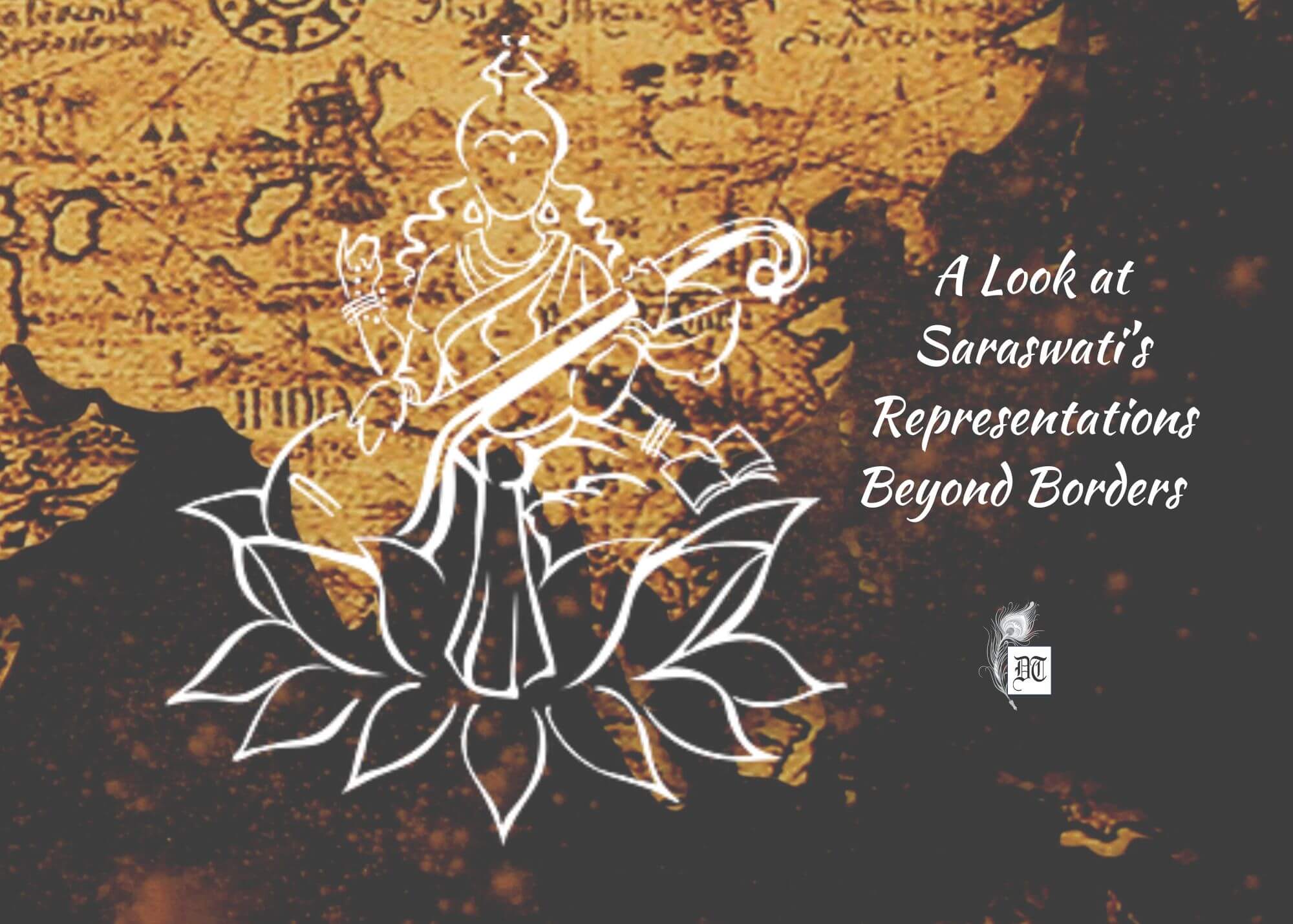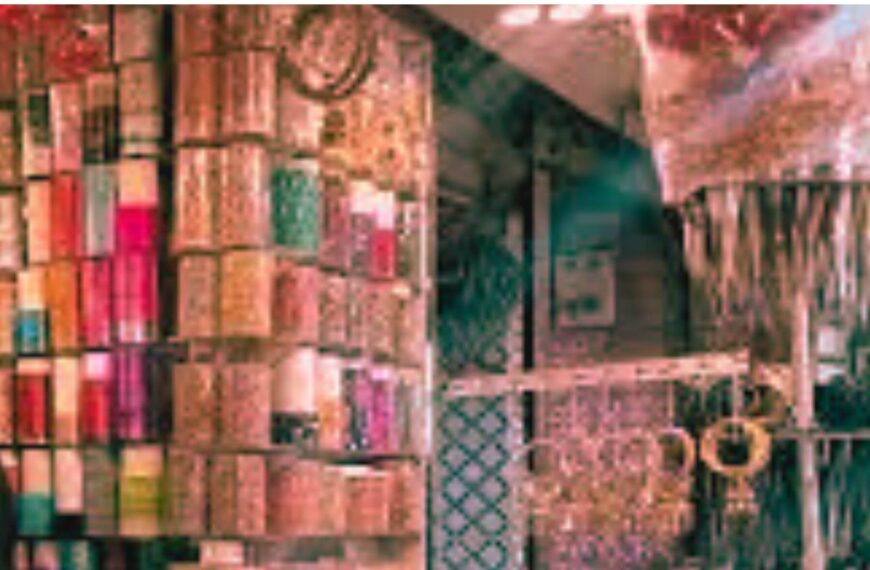Tabassum from Dacca explores Goddess Saraswati’s diverse cultural interpretations across Bangladesh, Nepal, Sri Lanka, Bhutan, Tibet, Myanmar, China, Japan, Thailand, Cambodia, Indonesia, and the US, showcasing her unifying power across cultures, in a Special Feature, exclusively for Different Truths.

My first encounter with Goddess Saraswati was when I was five or six years old. I went to my ancestral hometown and was invited to the puja celebration at a college. My father was one of the founders of the college, and I went with him. I remember the goddess with her transcended beauty in complete white. The statute was 30 inches, if my memory serves me correctly. She had her swan, and the goddess’s beauty was so captivating that the swan escaped my imagination.
In Bangladesh, we celebrate Goddess Saraswati puja with pomp and celebration. I was an unfortunate one because I never got to celebrate the puja. My school was a private school. My higher educational institutions were under the control of a student group known as the followers of a fundamentalist ideology.
The goddess is beyond borders.
There was always a hidden admiration for the goddess. The goddess is beyond borders. In Bangladesh, the goddess has two hands and a swan. Her attire is adorned with white in some places and with yellow in others as well. We see that the lute, the musical instrument, is prominent. The rosary, the water pot, the ink, and the pen are not prominent. Sometimes we see her holding a book. Her throne is not a lotus, but a throne.
We see four-handed goddesses rarely in Bangladesh. Even the goddess has four hands; she is seen holding the veena and sometimes the lotus. Her face has striking similarities with that of the goddess Durga. Her headpiece is more like the crown of the goddess Durga.
In India, the goddess is seen with all her graces of iconography. Even a peacock is present. I remember seeing the goddess with four hands in the Chennai Museum. It should be noted that I have observed the dominance of Goddess Laxmi in that part. In India, the goddess Saraswati is seen in colourful attire as well. The difference in iconography varies from state to state.
In Nepal, the goddess’s face has striking similarities with the goddess Tara. She is seen sitting over a lotus, and her iconography is almost like that of India. In Pokhara’s Bindhya Basini temple, she is seen with four hands and with the other traditional symbols.
In Sri Lanka, the goddess (known as Sri Vidya) is worshipped by the Buddhists.
In Sri Lanka, the goddess (known as Sri Vidya) is worshipped by the Buddhists. Her face is slightly different and reminded me of the paintings by Raja Ravi Verma. The mesmerising statue of the goddess in the public library, Jaffna, is soothing for eyes and minds.
The Bhutanese also celebrate Basant Panchami or goddess Saraswati puja.
The fascinating depiction of the goddess Saraswati (also known as Thurathadi) can be found in the Tibetan iconography of the goddess in the paintings. Sometimes she can be seen floating in the sea, with the nymphs offering her jewels and flowers. The moon is present. Sometimes she can also be seen in the water and the Himalayas in the background. Her lute is bejewelled. And very unlikely, sometimes floating in the air at the back of the swan with the moon with her. Her postures are different from the South Asian ones. Sometimes legs are crouched, or sometimes they are in a dancing posture but in a sitting position. In South Asia, we see her positioned in the ‘Lalitasana’ or the sitting posture.
In Myanmar, she is seen with a mythical swan-like creature. Her attire and adornment are befitting of the Burmese culture. She is seen to be with the books and not with the lute.
In Chinese paintings, the goddess (known as Biàncáitiān / Tapien-ts’ai t’iennu or Miao-yin mu) is seen wearing traditional Chinese Hanfu-like attire and traditional Chinese headpieces. She plays the lute and looks in a more down-to-earth manner.
In Japanese painting, the eight-armed goddess Benzaiten is seen with the flute, the scriptures, a wheel, a jewel, a bow, and arrow, a waterpot, a hook, and the dragon. In some paintings, she is holding a ‘Trishul’ or a sword. She can be seen floating against the sun or sometimes with the moon. Her attire is not a Kimono but a robe-like attire.
In Thailand, the goddess (also known as Suratswadi) is depicted as flying over the swan…
In Thailand, the goddess (also known as Suratswadi) is depicted as flying over the swan, with the swan holding the lotus. She has four hands holding a lute, a rosary, and scriptures. Her head is adorned with the traditional Thai headpiece. Her facial features are very different from those of our goddess. The more we move to the south-east, the differences become noticeable.
In one Cambodian painting, the goddess is represented by the famous Angkor Wat Temple, holding a lotus in one hand, and the other hand in a blessing mudra (sign). The mountains and rivers can be seen behind her.
In Indonesia, it is fascinating to see the goddess in Bali. One’s heart melts to see the goddess. The goddess is seen in a Balinese costume and four hands holding each symbol, signifying the meanings.
Indonesia, the country with the largest Muslim population in the world, gifted an imposing 16-foot-high statue of Saraswati, the goddess of learning and wisdom, to Washington, DC, in 2013.
The goddess’s statue, on top of a lotus, stands tall, a block away from the Indian Embassy, in front of a statue of Mahatma Gandhi.
It signifies the beauty of harmony, respect, and co-existence.
She is worshipped in Jainism as well.
She is worshipped in Jainism as well. It is not fair to restrain the goddess within the limits of religion. She is the symbol of knowledge, wisdom, intelligence, learning, the arts, purity, and spirituality. The goddess binds us all together, defying borders, languages, cultures, ethnicity, race, and distance.
Disclaimer: This write-up is not meant to offend anyone by any means. This is not an expert view. It is rather an effort to see the goddess from the eyes of an ignorant one. The write-up is based on the author’s personal and travel experiences and information available in the public domain on the internet ~ Author.
Picture design by Anumita Roy





 By
By
 By
By
